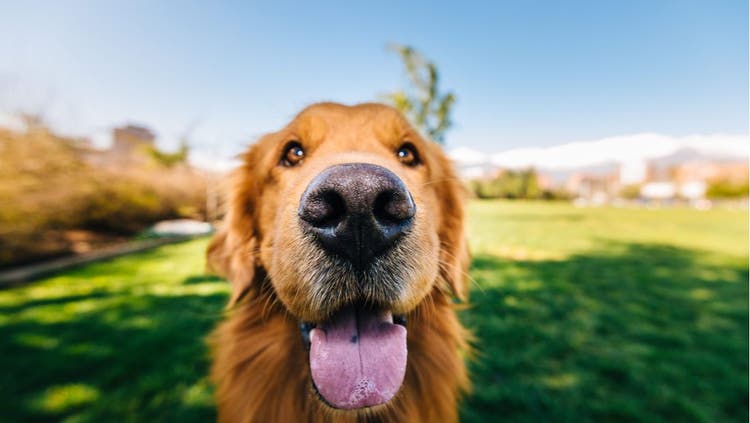
Why is My Dog’s Nose Crusty and Changing Color?
The cute, little, boopable noses we all love on our fur babies can actually tell us a lot about the overall health of their skin. From changes in pigmentation to crusting, any changes in the appearance of the nose is worth having checked out by your veterinarian.
What Is Pigment Change and What Causes It?
Pigmentation changes can mean a dark nose becomes grey (hypopigmentation) or pink (depigmentation), or a light-colored nose becomes freckled (lentigo).
Diseases that can cause loss of pigmentation include:
- Seasonal nasal hypopigmentation (aka snow nose). This is a benign change in which there is partial, cyclic lightening of the nose. It is most commonly seen in Golden Retrievers, Labrador Retrievers, and huskies. There is generally no other visible change to the nose, and it does not require treatment.
- Vitiligo. Vitiligo is an immune-mediated disease that causes loss of pigment, which often affects the nose. It causes lightening of the hair and other areas of the skin, like the lips and eyelids. This condition can be progressive and there is no known effective treatment, but the clinical signs are generally cosmetic and do not cause any systemic changes.
- Discoid Lupus Erythematosus. Causing loss of pigmentation in the nose, this immune-mediated disease differs from vitiligo due to erosions/ulcerations or fissuring of the skin, which can lead to bleeding and crusting. This disease, if untreated, can cause a loss of tissue. It can be challenging to differentiate from a mucocutaneous pyoderma (see below), and this condition often requires a biopsy for confirmation. Since it is a focal immune-mediated disease, therapy is often focused on topical medications.
- Cutaneous lymphoma. A rare type of cancer that is contained in the skin, this commonly causes loss of pigmentation in the nose, lips, and eyelids. In addition to loss of pigmentation, there is usually swelling of the nose, ulceration, and crusting. Generalized skin lesions are commonly seen as well. A biopsy is required to confirm this diagnosis.
What Causes Crusting of the Nose?
Crusting of the nose can be focal or generalized. It can occur as the sole change to the nose or in combination with other issues like loss of pigment or cracking and bleeding. As always, It is vital to note all the changes you’ve seen, since it can help streamline the diagnostic work up.
Diseases that Cause Crusting of the Nose:
- Xeromycteria (aka parasympathetic nose). Generally a focal, unilateral crusting of the nose, this condition is brought on by loss of innervation to the nerves that cause secretions that moisturize the nose. It can often be seen concurrently with dry eye and is commonly caused by trauma to the nerves or hypothyroidism.
- Mucocutaneous pyoderma. The result of a bacterial infection of the mucous membranes, this ailment can cause focal or generalized crusting of the nose. The exact cause of mucocutaneous pyoderma is unknown, but has been associated with allergic disease or trauma in some animals. The symptoms presented are very similar to discoid lupus erythematosus.
- Pemphigus foliaceus. Another immune-mediated disease that affects the nose, this causes crusting that extends from the nose onto the hair of the muzzle, around the eyes, onto the paw pads, and the ear flaps. It often causes generalized lesions on the bottom. This disease requires a biopsy to confirm the diagnosis and life-long therapy with immune-modulating medications.
How Do You Determine What is Causing Pigmentation Changes?
In order to predict the prognosis and the best direct treatment, a full diagnostic work up is generally necessary, especially considering the variety of potential causes.
Typically, there are several diagnostic tests that may be conducted. If there is crusting present, a sample will be taken to look for bacteria and inflammatory cells. If no infectious agents are noted, a biopsy may be needed to determine the underlying cause.
In general, most diseases that affect the nose are manageable and your veterinarian can help keep that nose as boopable as ever.